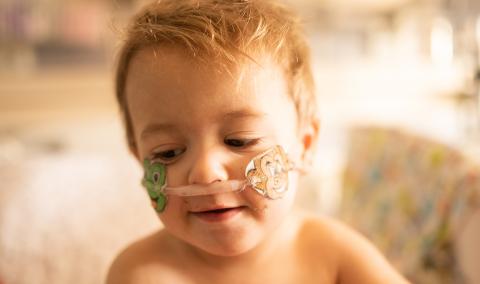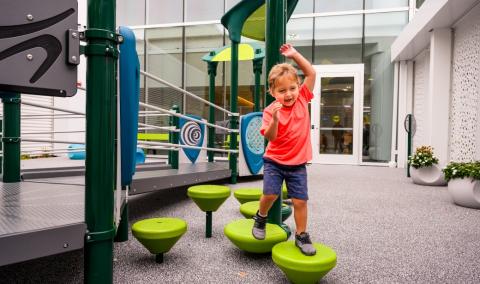Children may experience complex wounds due to congenital (present at birth) deformities, trauma, tumors or surgery.
When your child has a complex wound, you want to ensure they receive proper care. The plastic surgeons at MU Health Care Children’s Hospital are experts in reconstructing complex wounds in children.
Many different ways exist to surgically treat these various wounds. Some are simple, such as doing dressing changes or applying a skin graft, while others are much more complex, involving transplantation of tissues from one part of the body to another. Your plastic surgeon will carefully assess the wound and determine the best reconstructive option for your child.
Treatments for complex wound reconstruction
The exact treatment for any particular wound depends on many factors, including:
- The age of the patient
- The patient’s general medical condition
- The location of the wound
- The area and depth of the wound
- Whether any tissues are exposed in the wound
- Whether the wound is infected or clean
In some cases, a prolonged period of outpatient wound care is performed before surgical treatment. In other cases, more acute coverage of the wound is necessary.
For simple wounds, a conservative approach will often allow the wound to heal on its own with good wound care. Some wounds may require skin grafts, which can vary in thickness, and can be harvested from various parts of the body, depending on the requirements of the wound.
More complex wounds require coverage with tissue that has its own blood supply (unlike a graft). This tissue is called a "flap." Flaps can come from the region next to the wound or, in more complicated cases, may be taken from other parts of the body and transplanted using microsurgical techniques. In some cases, flaps may have a nerve incorporated to provide sensation in the reconstructed wound. Moreover, flaps can include various types of tissue, such as skin, fascia, muscle, bone and even small joints.
Hyperbaric oxygen therapy (HBOT) may be an option to help treat complex wounds that the body can’t heal on its own. HBOT uses pure oxygen in a pressurized cylinder to increase blood oxygen levels to help heal complex wounds more efficiently.
Our team will determine which method of wound reconstruction will best suit your child’s needs and will tailor the treatment accordingly.
Related Conditions & Treatments
- Adolescent Medicine
- Chest Wall Deformities
- Down Syndrome
- Emergency Care for Kids
- Gastrostomy and Feeding Access Program
- Hyperbaric Oxygen Therapy
- Juvenile Diabetes
- Neonatology
- Pediatric Anesthesiology
- Pediatric Cancer
- Pectus Carinatum
- Pectus Excavatum
- Pediatric Cardiology
- Pediatric Dermatology
- Pediatric Development and Behavior
- Pediatric ENT (Ear, Nose and Throat)
- Pediatric Epilepsy
- Pediatric Eye Care
- Pediatric Gastroenterology
- Pediatric Infectious Diseases
- Pediatric Inpatient Rehabilitation
- Pediatric Nephrology
- Pediatric Neurology
- Pediatric Neurosurgery
- Pediatric Orthopaedics
- Pediatric Plastic Surgery
- Pediatric Primary Care
- Pediatric Psychiatry
- Pediatric Pulmonary Medicine
- Pediatric Sleep Medicine
- Pediatric Surgery
- Pediatric Surgical Services
- Pediatric Urology
- Pediatric Vascular Anomalies
- Pediatric Weight Management
- Sickle Cell Disease
- Aerodigestive Program



























